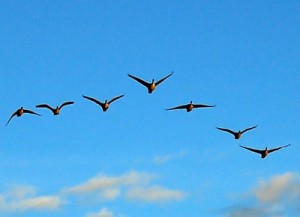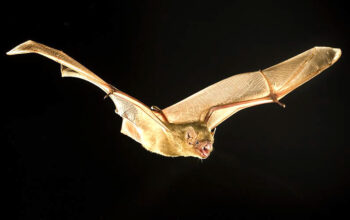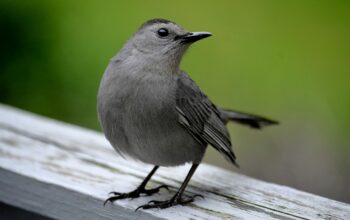The Canada goose is a wild goose native to temperate regions of North America, occasionally found in northern Europe and New Zealand. Also referred to as the Canadian goose, it has seven subspecies of varying size and plumage. The males usually weigh between 7 – 14 lbs, females are virtually identical but slightly smaller at 5 – 12 lbs, and have a different honk. Their wingspan ranges from 50 – 73 inches in length.
The Canada goose is a migratory creature of habit, overwintering in the south and breeding during spring in the north. However, due to an abundance of safe, man-made bodies of water and easier food sources, these geese have become permanent residents in urban areas as far south as Florida. This change in their behavior has led to overpopulation in some areas, where they are considered pests due to their droppings, noise and abrasive disposition.
Canada geese, and other migratory birds, fly in a V formation to conserve energy on long flights. The lead bird “breaks the wind”, reducing the resistance for the other birds. When this bird tires it falls back and another takes its place; in this way they rotate positions in the formation. This flight pattern also helps the birds “keep an eye on each other.”




